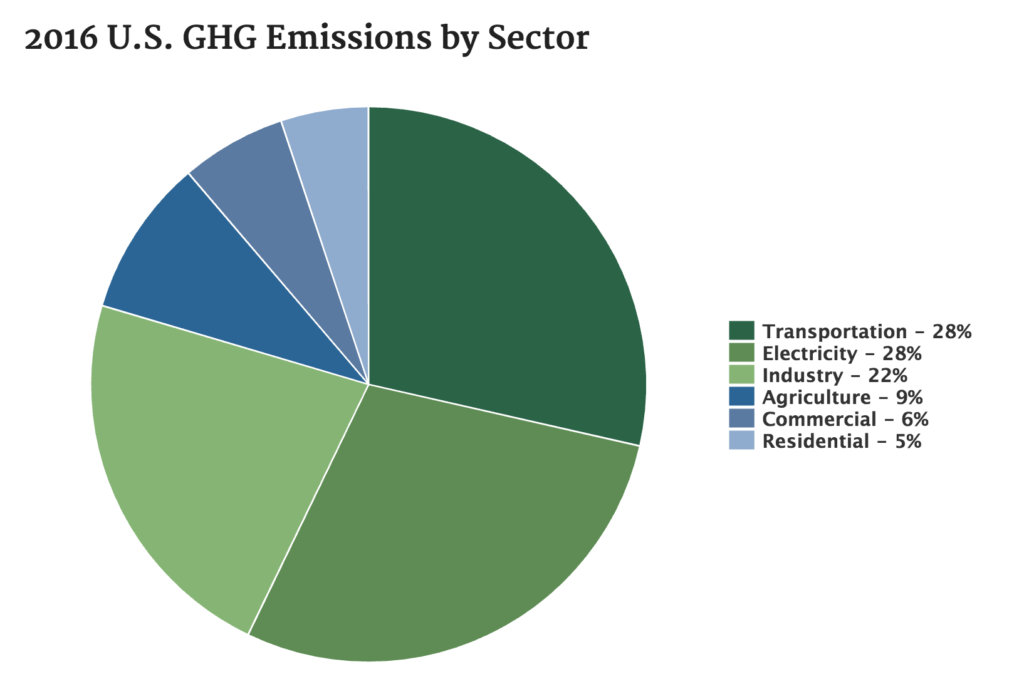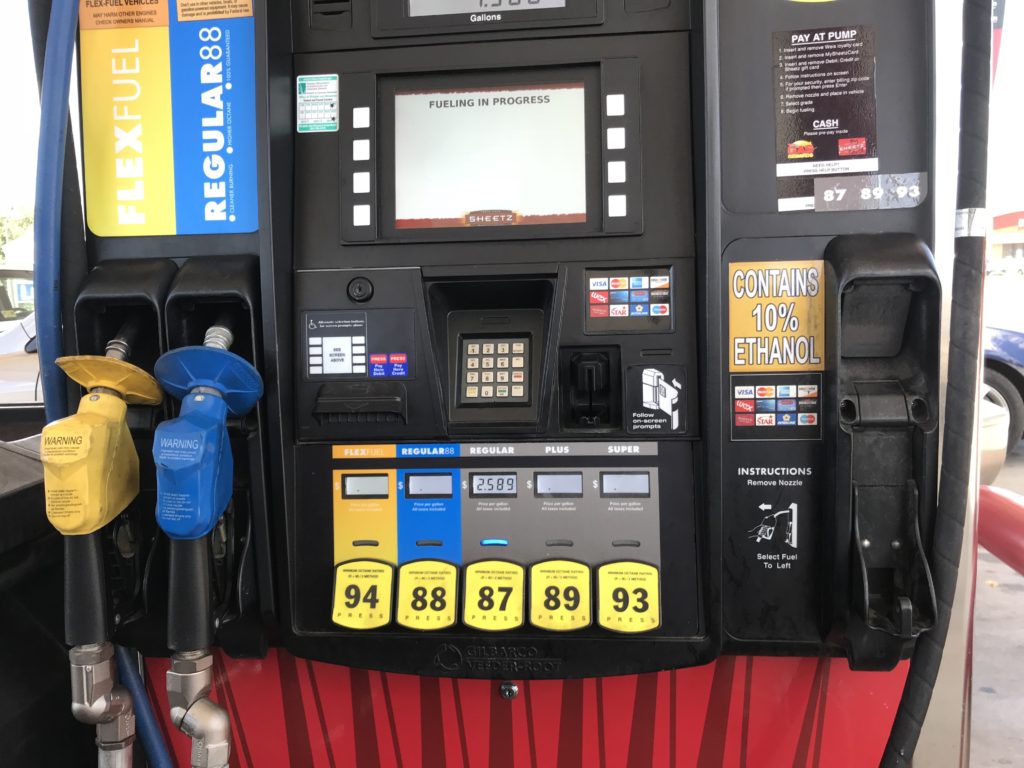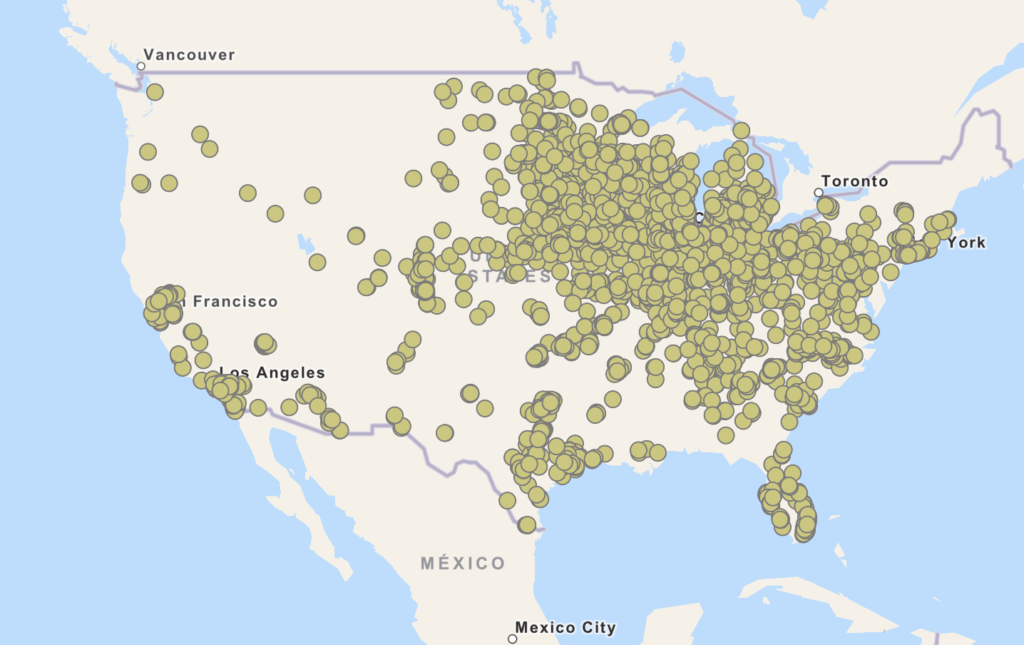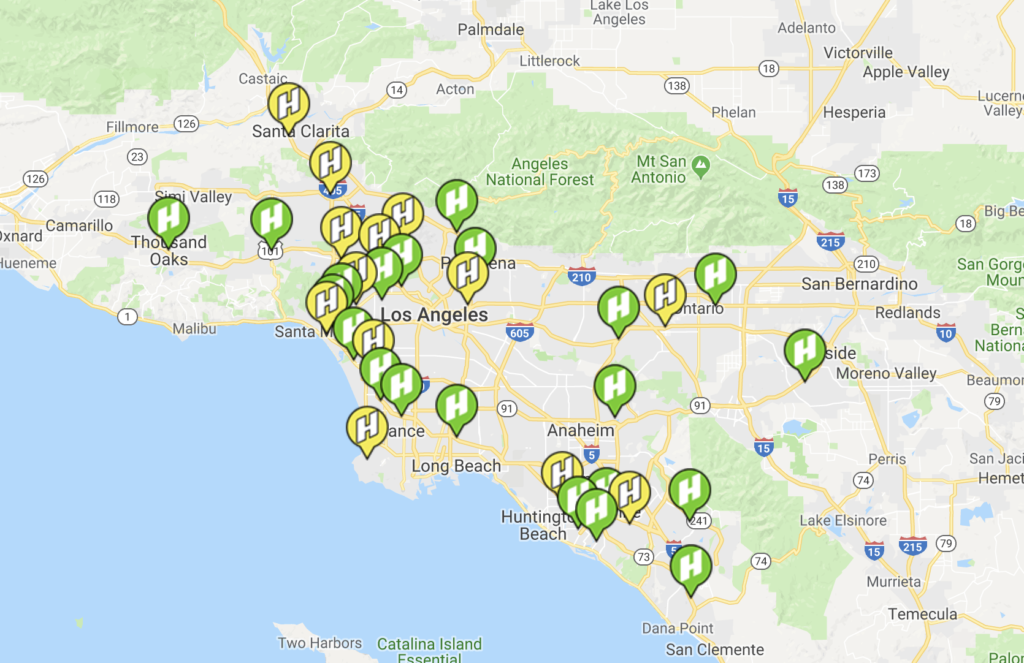 In 2017, Hurricanes Harvey and Irma swamped Houston and Florida with record amounts of rainfall and storm surges. Fuel prices jumped and shortages ensued. People panicked. Fear not! You can do something to help stop the madness.
In 2017, Hurricanes Harvey and Irma swamped Houston and Florida with record amounts of rainfall and storm surges. Fuel prices jumped and shortages ensued. People panicked. Fear not! You can do something to help stop the madness.

2016 U.S. GHG Emissions by Sector. Source: EPA
In 2016, twenty-eight percent of U.S. greenhouse gas (GHG) emissions was from transportation [https://www.epa.gov/greenvehicles/fast-facts-transportation-greenhouse-gas-emissions].
With fewer greenhouse gases, there are fewer molecules to trap heat in the atmosphere, and that help prevent the acceleration of climate change. The better news is that vehicles that run on electricity, natural gas and propane also have lower fuel and maintenance costs. The great news is that depending on your fuel type and mileage, you can save significant amounts of money and still be part of the solution.
Ethanol Blends
 Alleyn Harned, Executive Director of Virginia Clean Cities provides easy-to-follow guidance to make a difference: “All gasoline vehicles can use E10 – gasoline blended with up to 10% ethanol. Model years 2001 and later can use E15 – up to 15% ethanol. Most gas stations already include a minimum of 5% ethanol.” If you have a FlexFuel vehicle, you can use up to 85% ethanol. You can do this at your next fill up. Look for stations that have these higher ethanol blends and purchase fuels from those stations. You’ll be helping just like that.
Alleyn Harned, Executive Director of Virginia Clean Cities provides easy-to-follow guidance to make a difference: “All gasoline vehicles can use E10 – gasoline blended with up to 10% ethanol. Model years 2001 and later can use E15 – up to 15% ethanol. Most gas stations already include a minimum of 5% ethanol.” If you have a FlexFuel vehicle, you can use up to 85% ethanol. You can do this at your next fill up. Look for stations that have these higher ethanol blends and purchase fuels from those stations. You’ll be helping just like that.

Ethanol fueling station locations cover the US. See the Alternate Fuel Data Center map for locations.
Biodiesel
Per the National Biodiesel Board, biodiesel “is a clean-burning diesel replacement… made from an increasingly diverse mix of resources including agricultural oils, recycled cooking oil and animal fats… and meets the strict specifications of ASTM D6751.” Filling stations are more limited in number but if you’re near one, you can make the switch. Check the Alternate Fuel Data center map for biodiesel.
Natural Gas and Propane Autogas
There are high-performance systems that allow standard gasoline and diesel vehicles to run on natural gas or propane. There’s an added cost for the system up front, after which you reduce emissions and start saving money immediately. The return on investment is very easy to figure out based on historical pricing. These are great options for commercial fleet vehicles that have tremendous fuel costs such as service fleets and public transit.

Wholesale Cost of Natural Gas and Propane. Courtesy of Roush CleanTech
“Historically, propane autogas averages 50 percent less than diesel and 30 to 40 percent less than gasoline,” said Chelsea Uphaus, director of marketing for ROUSH CleanTech. “Fleets usually pay less than half the retail cost of propane.” Uphaus also points out that many propane providers will install a propane fuel station at low or no cost with a fuel contract.
Electric Vehicles
A hugely popular option for consumers is electric vehicles (including hybrids and full-electric). They eliminate tailpipe emissions and save fuel costs by using electricity. The emissions from the power grid can be viewed on a regional basis. The chart below shows grid-based emissions compared to tailpipe emissions. Follow the link and select your state to get a more accurate picture of emissions from the power grid in your region. As more of our power is generated by wind and solar power, the emissions from generation to tailpipe approaches zero. Electric vehicles require less maintenance since they have significantly fewer moving parts. The cost to travel a mile on electricity in an EV is a fraction of a gasoline or diesel vehicle, so you’ll save money on fuel costs and maintenance at the same time.
Hydrogen Fuel Cell Vehicles

Los Angeles Hydrogen Fuel Stations. Courtesy of California Fuel Cell Partnership
For drivers in California, hydrogen is a new option. Honda, Hyundai and Toyota have passenger vehicles on the road that run on hydrogen fuel cells. Public transportation buses are also coming online and taking advantage of cleaner fuel. Fuel cell vehicles emit only water vapor from their tailpipes. You can’t get any cleaner than that. As of July 2018, California had 29 retail hydrogen stations, with more on they’re way. They are clustered in the densest areas of San Francisco and Los Angeles areas.The state has a goal of 100 hydrogen fuel stations by 2020.
Clean Fuel Vehicles are Here
There was a time when we didn’t know these clean fuels worked, but that time is long past. Clean fuel is big business and brings with it high levels of precision, reliability and support. Companies small and large have invested in and enjoy the benefits of clean fuels. Whether you’re an individual, small business or fleet manager, there are benefits the environment, and most likely your wallet. So, consider the last record-breaking-hurricanes a wake up call and an opportunity to make a change.